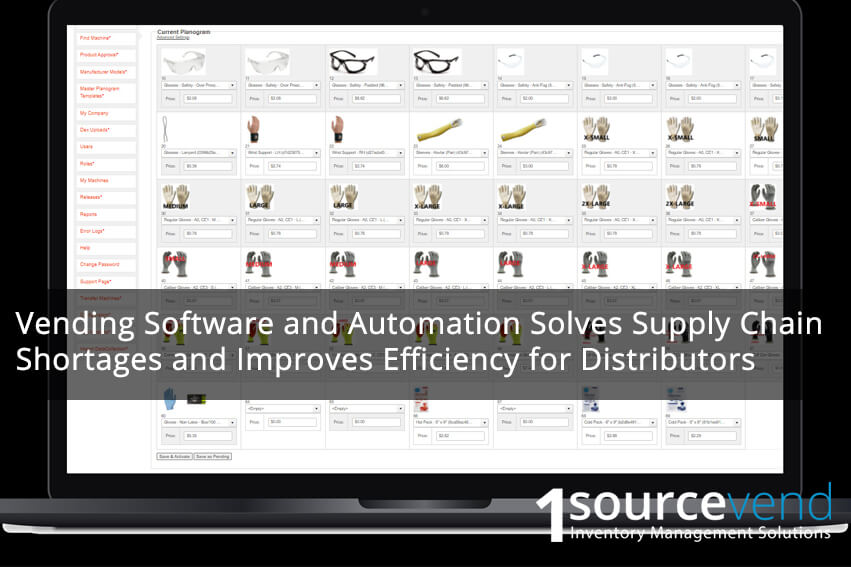
Supply chain disruptions have caused distributors to consider alternative ways to accommodate growing demand, with many investing in more warehouse space. That may work for some, but for others, holding on to more stock isn’t always the best strategy. Tying up inventory with “safety stock” lowers inventory turnover and increases risk in the form of potential inventory loss, damage, or expiration. Moreover, increased inventory holdings often tie up cash flow that could be used to support other business objectives.
John Hogg, president and supply chain consultant at Straight Forward Consulting, says, “Running out of warehouse space? Warehouse space is at a premium across the US, so before you go spend money for more space, make sure that what you are storing is inventory you should be storing.”
He added, “Look at how each item is moving. Chances are, you have a lot of SMOI (slow moving, obsolete inventory) clogging up the works.”
Adding complexity to the issue is the increased demand for alternative purchasing channels like ecommerce. Today’s customers want digital options, mobile apps, and automated services that cater to them, whether the sales rep can be there or not. In the past, fewer in-person contacts made it challenging for distributors to effectively manage customer inventory, resulting in inaccurate inventory counts, stockouts and last-minute purchasing.
To accurately forecast customer needs, distributors need consistent, ongoing visibility into material usage and trends. Fortunately, technology is making limited-contact sales more reliable.
Technology Adoption on the Rise as Supply Chain Woes Continue
In 2020, many distributors found that resisting advancements like vending and e-commerce worked against them as in-person opportunities with their customers were diminished. Today is a different story. Distributors are using technology to increase engagement, improve efficiency, and forecast needs for better customer satisfaction and retention.
Related: How Distributors are Leveraging Technology for Stronger Customer Relationships
As distributors move toward technology adoption, operations leaders are also showing less hesitancy about moving forward with technology investments.
Modern Materials Handing published results from Peerless Research Group’s recent survey (MMH). The survey polled 114 decision-makers including managers and executives in multiple verticals involved with materials handling system decisions. The survey showed that 59% of those respondents reported plans to invest in automation and technology in 2022.
“It’s the new landscape,” says Norm Saenz, managing director and partner with St. Onge, a supply chain engineering and consulting company. “I think leaders in operations see the writing on the wall. They realize that there needs to be more automation in their facilities to support throughput requirements and offset the lack of enough workforce to carry out processes manually, so we’re seeing more automation.”
“The trend is toward more optimism and use of automation,” added Donald Derewecki, a senior consultant with St. Onge. “The survey shows that a cross-section of companies of different sizes realize that they have to keep up with automation and information technology to stay competitive.”
Along with increased customer demand, higher adoption rates for the Internet of Things (IoT) and cloud computing-enabled industrial vending machines are anticipated to drive the market toward growth.
Curious if vending can help your business? Download A Distributor’s Guide to Best Practices in Vending & Inventory Control.
Importance of Inventory Management for Resilient Inventory Management
As customers continue to automate their operational processes and buy online, it can be challenging for distributors to anticipate their needs. However, distributors are finding relief with automated solutions that effectively manage inventory levels in their own warehouses, as well as customer locations. Technological advancements in inventory management like vending and inventory control software have improved inventory tracking, procurement and fulfillment practices.
Digital technology like vending and inventory control software gives organizations added visibility into inventory usage and the ability to “look around the corner” to prepare for future supply chain shocks.
According to McKinsey & Company, this data intelligence can help build resilience by analyzing procurement data to improve transparency and drive actionable insights.

According to Grand View Research, the industrial vending machine market is estimated to reach $4.6 billion by 2027. Studies suggest that manufacturers will continue to add industrial vending machines to lower operational downtime and effectively manage inventory. Personal protective equipment (PPE) is predicted to be the fastest-growing product segment.
Vending is a flexible and customizable solution. Customers can choose traditional helix-coil vending machines, locker vending machines, combination units, drawer cabinets and tabletop machines to begin streamlining their inventory management immediately.
Distributors can leverage value-added services like vending and inventory control software to help customers reduce spend in their supply management. Industrial vending machines and inventory control software, like 1sourcelive, provide real-time reporting on inventory, allowing customers to track and control inventory usage at the point of use to avoid stockouts. With vending, distributors and their customers can also:
Lower Carrying Costs
Vending helps your customers achieve the visibility and precise inventory control required for lean management and eliminates the need for expensive stockroom personnel. Distributors can perform routine inventory counts and track inventory along with asset management via consumption reports.
Reduced Shrinkage
Distributors can help customers increase accountability by tracking parts usage with check-in and check-out processes. Functions include the ability to limit access to authorized personnel and use QR, barcode or RFID tags for parts check-in and check-out.
Improve Regulatory Compliance
Vending provides consistent organization, storage, tracking and documentation of inventory to regularly monitor employee compliance and usage for improved safety and compliance. Customers can also choose to easily kit supplies together when necessary for improved compatibility.
Deliver real value to your customers when they need it most. Vending and inventory management software together can help sustain and strengthen relationships even when you can’t visit, for whatever reason.
Interested in learning more? Visit our website.
1sourcevend’s point-of-use inventory solutions and software are designed by distributors, for distributors, looking to differentiate themselves from the competition. Learn how we can help you choose the right inventory management software and American-made vending solutions to empower your customers. Request a Demo
